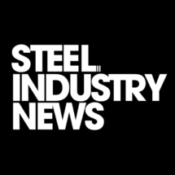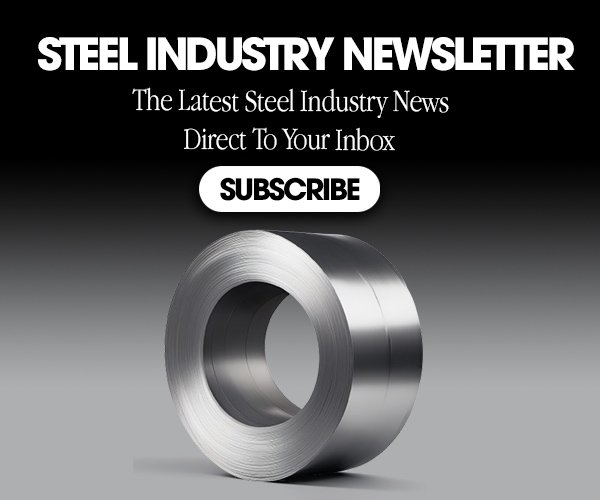The steel industry has once again captured attention with recent price hikes announced by two major players, Nucor and U.S. Steel. These increases reflect the dynamic nature of the steel market and its sensitivity to various economic factors. Let’s review the details of these price adjustments and their potential implications for the industry and consumers.
Nucor’s Strategic Price Increase
Nucor, one of the largest steel producers in the United States, has taken a significant step by raising its hot-rolled (HR) steel prices. The company is now seeking $740 per ton for HR steel, marking a $20 per ton increase from the previous week. This move signals Nucor’s confidence in the current market conditions and its ability to command higher prices for its products.
Factors Driving Nucor’s Decision
Several factors may have influenced Nucor’s decision to raise prices:
- Market Demand: An uptick in steel demand across various sectors could be driving this price increase.
- Production Costs: Rising raw material costs or energy prices might necessitate higher product prices to maintain profit margins.
- Capacity Utilization: If Nucor’s mills are operating at high capacity, it may feel confident in pushing for higher prices. Conversely as capacity utilization decreases it may put pressure on producers to get more money for the volume that they are able to sell.
- Duties: Recent petitions on coated products will likely decrease import volumes and increase transaction prices of future sales.
U.S. Steel’s Bold Move
U.S. Steel, another industry giant, has also announced a price increase, albeit with a different approach. The company aims to raise prices for all sheet products by $30 per ton. Unlike Nucor, U.S. Steel has not announced a specific target price, leaving some room for flexibility in negotiations with customers.
U.S. Steel’s Strategy
U.S. Steel’s decision to increase prices across its sheet product line suggests a broader strategy:
- Product Range: By applying the increase to all sheet products, U.S. Steel is looking to boost revenues across its entire flat-rolled steel portfolio.
- Market Positioning: This move may be an attempt to reposition U.S. Steel’s products in the market, potentially aiming for a premium segment.
- Cost Recovery: Like Nucor, U.S. Steel may be responding to increased production costs or seeking to improve profit margins.
Historical Context
To understand the significance of these price increases, it’s helpful to look at recent historical trends in the steel industry:
- In October 2023, U.S. Steel attempted to raise sheet prices by $100 per ton. This more aggressive increase came at a time when the market was experiencing different conditions.
- The steel industry has seen significant volatility in recent years. In 2021, hot-rolled coil prices reached a record high of nearly $2,000 per ton, before declining steeply to $620 per ton in November 2022.
Market Implications
The price increases by Nucor and U.S. Steel could have several implications for the steel market:
- Industry-wide Trend: Other steel producers may follow suit, leading to a general increase in steel prices across the board.
- Customer Reactions: Steel buyers may rush to place orders before the price increases take effect, or they might delay purchases if they believe the increases are unsustainable.
- Downstream Effects: Industries that heavily rely on steel, such as automotive and construction, may face increased costs, potentially leading to higher prices for end consumers.
Challenges and Uncertainties
Despite the optimism reflected in these price increases, the steel industry faces several challenges:
- Economic Concerns: Fears of a potential recession and its impact on steel demand loom over the industry.
- Inventory Levels: Sufficient inventory levels among steel buyers could dampen the immediate effect of these price increases.
- Global Competition: The ability of domestic producers to maintain higher prices may be influenced by import competition and global steel market conditions.
The Role of Big River Steel
It’s worth noting that U.S. Steel’s price increase also applies to material from Big River Steel, its electric arc furnace (EAF) sheet mill in Osceola, Arkansas3. This inclusion highlights the integrated approach U.S. Steel is taking across its various production facilities.
Looking Ahead
As the steel industry navigates these price increases, several factors will be crucial to watch:
- Market Acceptance: The success of these price hikes will depend on whether customers accept them or push back.
- Competitor Responses: How other steel producers react to these increases will shape the overall market dynamics.
- Economic Indicators: Broader economic trends, including manufacturing activity and construction sector performance, will influence the sustainability of higher steel prices.
Conclusion
The recent price increases announced by Nucor and U.S. Steel represent a significant moment for the steel industry. These moves reflect a degree of optimism about market conditions and a strategic positioning by these major players. However, the success of these increases will ultimately depend on market acceptance and broader economic factors. As the industry moves forward, stakeholders across the supply chain will be closely monitoring the effects of these price adjustments. From steel producers to end-users, the ripple effects of these increases could be felt throughout various sectors of the economy. In an industry known for its cyclical nature, these price hikes serve as a reminder of the constant evolution and adaptation required in the steel market. As we progress through 2024, the outcomes of these pricing strategies will provide valuable insights into the health and direction of the U.S. steel industry.
For the latest steel news updates on Steel Pricing and other steel trends, be sure to follow Steel Industry News
Check out some of our other articles on the Steel Market:
Steel Pricing Update: Nucor Announces Price Increase
Pricing Update: Cleveland Cliffs and Nucor Announce Increases
Steel Prices Rebound: Nucor and Cleveland-Cliffs Announce Price Increases
Steel Pricing Update: Nucor and Cleveland-Cliffs Lead the Way
Nucor CSP Price Update: Downward Trend Continues
Summer Slowdown: Exploring the Factors Behind the Steel Market Downturn
Steel Prices Slide: Nucor CSP Dips Again, Construction Slowdown a Potential Culprit
Steel Price Update: Nucor CSP Dips, Cleveland Cliffs Follows With August Price Decrease
Steel Prices Continue Decline Pressured By Housing Market Slowdown
Nucor’s CSP: A Game Changer in Steel Price Transparency?









